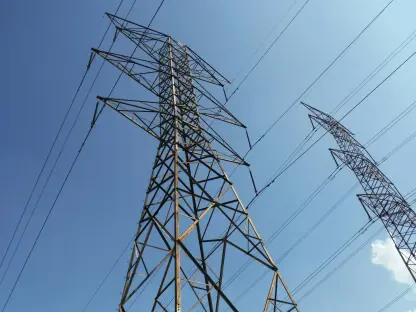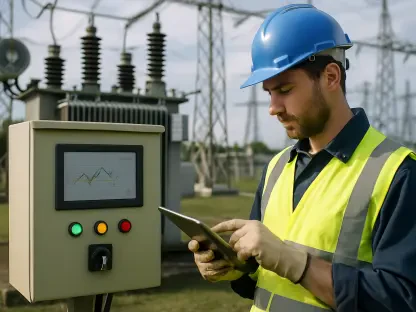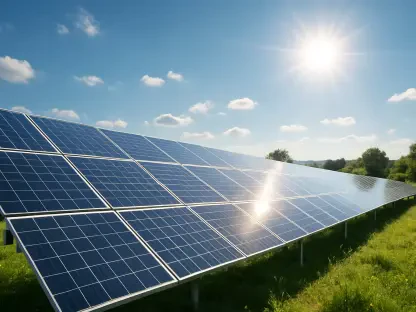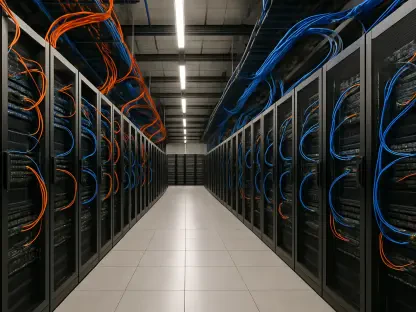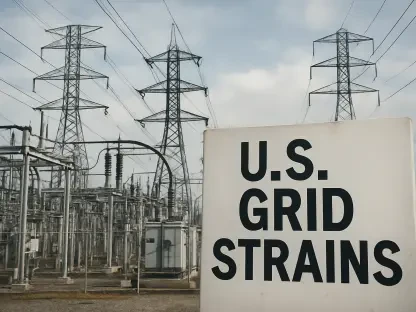The urgency for carbon capture and commercialization technologies has never been more pressing. With anticipated economic and political uncertainties accompanying the shifting U.S. administration, the need for robust, economically feasible, and scalable carbon capture methods is paramount. The innovative Direct Air Carbon Capture (DACC) technology by Carbon Capture and Commercialization (CC&C) emerges as a shining example, offering a cost-effective and immediate solution to the climate crisis.
The Political and Economic Backdrop
Potential Policy Shifts with a New Administration
With a potential return of Donald Trump to the White House on the horizon, the landscape of U.S. policies might undergo significant alterations. One major concern is the Project 2025 Mandate for Leadership by the Heritage Foundation, which proposes eliminating the Department of Energy’s Office for Clean Energy Demonstrations. This potential move could drastically reduce funding for various carbon capture projects, making private-sector initiatives crucially important. If the private sector does not step up, many promising technologies may never see the light of day, hindering efforts to curb greenhouse gas emissions effectively.
The possibility of these policy shifts places immense pressure on private stakeholders to innovate and implement carbon capture methods that do not rely on government subsidies. Technological advancements such as CC&C’s Direct Air Carbon Capture technology are critical in this context. By delivering economically viable solutions ready for deployment, private enterprises can fill the void left by potential policy changes and ensure continued progress in the fight against climate change. Such preparedness is not just advisable but essential to prevent setbacks in sustainability efforts.
Economic Uncertainties in Europe
Economic challenges are not confined to the United States. Major European economies, including Germany and the UK, are currently grappling with GDP contractions that could significantly slow their sustainability initiatives. With economies teetering on the brink of recession, government budgets allocated for green technologies and carbon capture projects may face extensive cuts. This economic uncertainty underscores the vital importance of scalable and economically viable carbon capture technologies that can operate independently of fluctuating government support.
Given these economic constraints, reliance on government-funded projects becomes less feasible, elevating the role of private sector innovation and investment. Companies like CC&C, with their groundbreaking DACC technology, offer a lifeline. By providing cost-effective, scalable solutions, these companies can help bridge the gap left by reduced government funding and keep sustainability initiatives on track. Germany and the UK, along with other European nations, must look to these innovative technologies to continue their commitment to reducing greenhouse gas emissions, even amid financial strife.
The Promise of Direct Air Carbon Capture (DACC)
Affordability and Readiness
CC&C’s DACC technology represents a major breakthrough in terms of affordability, capturing CO2 at the cost of less than $100 per ton. This pricing is unprecedented and makes it one of the most economically viable solutions currently available. More importantly, the technology is ready for immediate deployment. Sam Adams, the CEO of Technology at CC&C, emphasizes that the system’s current readiness is a game-changer. Unlike some technologies that promise future results, DACC delivers actionable solutions now, providing a tangible response to today’s climate crisis.
The readiness of this technology cannot be overstated. In a world grappling with the immediate impacts of climate change, solutions that can be deployed now—rather than in the distant future—are invaluable. The DACC technology by CC&C not only offers an affordable solution but also one that can be fully operational in the near term. This immediacy is crucial for businesses and governments looking to take swift action against rising emissions. It provides a practical path forward, one that does not have to rely on unproven future technologies or long-term speculative investments.
Scalability and Mass Production
One of the standout features of CC&C’s DACC technology is its scalability, which is critical for widespread adoption. The system is meticulously designed for mass production, enabling it to be deployed across industries of all sizes. This capability of large-scale deployment is essential for achieving a significant impact on global emissions. Traditional carbon capture methods are often complex, expensive, and energy-intensive. In contrast, DACC employs functionalized graphene adsorbers, which not only capture CO2 more effectively but also do so at a lower cost.
Scalability ensures that the technology is not limited to a select few large corporations or government projects. Instead, it can be adopted by a wide range of industries, from large manufacturing plants to smaller enterprises, thereby multiplying its effectiveness and reach. The ability to deploy this technology broadly means that the cumulative impact on greenhouse gas reductions can be substantial. In practical terms, this makes DACC a versatile solution that can be integrated across various sectors, accelerating the global transition to net-zero emissions.
Challenges and Limitations of Long-Term Strategies
The Inefficacy of Government Subsidies
While government subsidies and public policies play an essential role in advancing green technologies, they are not seen as a panacea for today’s urgent climate challenges. The skepticism surrounding the efficacy of these measures highlights a significant gap: immediate, deployable solutions are desperately needed. Subsidies often come with bureaucratic hurdles and delays, which can stymie quick action. This is where technologies like CC&C’s DACC come into the picture, offering a rapid response to the escalating climate crisis.
The current skepticism towards government subsidies is rooted in real-world inadequacies. Policies often change with political winds, leading to inconsistencies in support for green technologies. Consequently, reliance on subsidies alone can be precarious. Immediate, deployable solutions that are financially viable and scalable, such as those provided by CC&C, offer a more stable and effective approach to reducing emissions. By focusing on technologies that do not require extended timelines or conditional government support, businesses and communities can take actionable steps towards sustainability without waiting for policy alignments.
Long-Term Commitments vs. Immediate Needs
Long-term strategies have their place in sustainability efforts; however, they often fail to address the pressing need for immediate carbon reduction. Take, for example, Google’s recent deal with Holocene to purchase 100,000 tons of carbon removal credits by 2030. While this commitment signifies a promising move toward sustainability, it does little to mitigate the current levels of emissions. Such long-term investments, though valuable, are insufficient for tackling the immediate climate crisis we are facing today.
The mismatch between long-term commitments and current needs is a growing concern. Investments that do not yield results for years may be too late to make a meaningful impact on slowing global warming. Immediate, deployable technologies, such as CC&C’s DACC system, offer a critical solution. By capturing carbon at less than $100 per ton and being ready for deployment now, these technologies provide a way to address current emissions and put us on a path toward sustainability. This dual focus on the present and future is essential for a balanced, effective climate action strategy.
Advantages of CC&C’s DACC Technology
Cost-Effective Carbon Capture
One of the most compelling aspects of CC&C’s DACC technology is its cost-effectiveness in capturing carbon, pricing at under $100 per ton. This affordability is crucial for its adoption across various industries, particularly those with tighter budgets. More businesses can now participate in carbon reduction initiatives without incurring prohibitive costs, making the goal of net-zero emissions more attainable. The economic viability of this technology sets it apart from other methods, which are often too costly for widespread implementation.
Cost-effectiveness extends beyond just the capture process. The comprehensive nature of this technology means that businesses won’t have to invest heavily in supplementary systems or incur extensive operational costs. This economic advantage is pivotal in encouraging broader participation in carbon capture initiatives. It removes one of the biggest barriers—financial feasibility—and makes it easier for companies of all sizes to commit to meaningful emissions reduction. As a result, the potential for significant and immediate impact on global carbon levels is dramatically enhanced.
Energy Efficiency and Practical Engineering
Another standout feature of CC&C’s DACC technology is its energy efficiency. Traditional carbon capture methods are often criticized for being energy-intensive, thus counteracting some of their benefits. CC&C’s approach, however, employs functionalized graphene adsorbers, which are more effective and efficient in capturing CO2. This energy efficiency not only reduces operational costs but also makes the technology a more sustainable choice, reinforcing its long-term viability.
The practical engineering behind this technology combines cutting-edge materials science with real-world applications. This integration of advanced science and practical engineering solutions is crucial for urban environments, where space and resources may be limited. Functionalized graphene adsorbers not only lower energy consumption but also streamline the carbon capture process, making it more applicable for various industrial settings. This practicality makes CC&C’s DACC technology a leading contender for addressing carbon emissions in an efficient, scalable, and sustainable manner.
Broader Adoption Potential
Mass Production and Deployment
The design of CC&C’s DACC technology for mass production ensures that it can be widely deployed across industries of all sizes, enhancing its broader adoption potential. This scalability is not just a technical feature but a strategic advantage, allowing industries to implement the technology without extensive customization or costly installations. The wider the adoption, the more significant the collective impact on reducing greenhouse gas emissions, contributing to global sustainability goals.
Mass production also means that the technology can be rolled out quickly, meeting the urgent demand for effective carbon capture solutions. Industries ranging from manufacturing to services can integrate this technology into their operations seamlessly, fostering a collaborative effort in fighting climate change. The ability to deploy DACC across multiple sectors means that the cumulative impact on emissions reduction can be exponentially greater, making it a robust solution in the battle against global warming.
Immediate Impact on Emissions Reduction
The immediate impact of CC&C’s DACC technology on emissions reduction cannot be overstated. By offering a cost-effective, scalable solution that is ready for deployment now, CC&C enables industries to take concrete steps toward achieving net-zero emissions. This immediacy is vital in the current climate crisis, where delayed action could have catastrophic consequences. The technology provides a practical pathway for industries to reduce their carbon footprint and contribute to global efforts in mitigating climate change effectively and efficiently.
The straightforwardness of implementing DACC technology means industries can begin to see results almost immediately. This rapid deployment is essential for meeting urgent climate targets and ensuring that short-term actions align with long-term sustainability goals. By focusing on technologies that offer immediate benefits, CC&C sets a precedent for how businesses can contribute proactively to climate action. The technology aims to bridge the gap between theoretical solutions and real-world implementation, providing a viable option for immediate emissions reduction.
The Founders and Their Vision
Expertise in Direct Air Carbon Capture
Founded in 2019 by Sam Adams and Fernando Sanchez, CC&C leverages the founders’ extensive expertise in the Direct Air Carbon Capture industry to create sustainable and scalable solutions. Their combined knowledge and experience have been instrumental in the development of technologies that are not only innovative but also practical and ready for deployment. This expertise has positioned CC&C as a leader in the field, driving advancements that are crucial for the future of carbon capture and commercialization.
The founders’ vision extends beyond merely developing new technologies; it involves creating solutions that can be integrated into existing systems and scaled effectively. Their focus on urban environments highlights a commitment to making carbon capture accessible and functional in diverse settings. By leveraging cutting-edge materials science and practical engineering solutions, Adams and Sanchez have set the tone for a forward-thinking approach that prioritizes both immediate application and long-term sustainability.
Commitment to Immediate Action
The need for effective carbon capture and commercialization technologies is more urgent than ever before. Anticipated economic and political uncertainties associated with the changing U.S. administration underscore the importance of having reliable, economically viable, and scalable methods for capturing carbon emissions. Direct Air Carbon Capture (DACC) technology, developed by Carbon Capture and Commercialization (CC&C), serves as a groundbreaking example. DACC offers a practical, cost-effective solution to the climate crisis by enabling the capture of carbon dioxide directly from the atmosphere.
This technology not only addresses environmental concerns but also promises significant economic benefits by creating new markets for captured carbon. As industries and governments seek to meet increasingly stringent climate goals, innovations like DACC will play a crucial role in reducing greenhouse gas emissions on a global scale. With the current administration’s focus on climate policy, the deployment and scaling of DACC technology could be a game-changer, accelerating the transition toward a more sustainable future.



